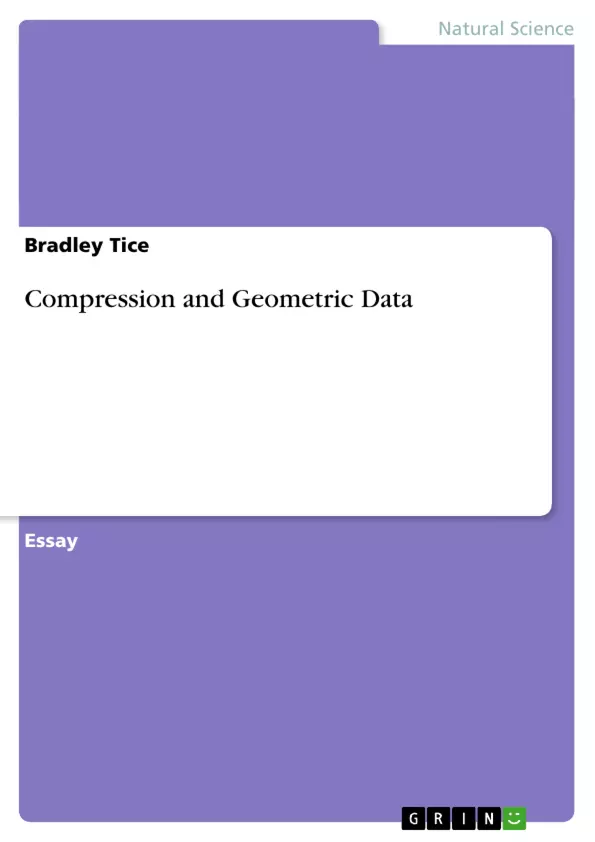The paper presents theoretical and applied aspects to linear binary sequential strings for compression of geometric data. Both random and non-random sequential binary strings are used to compress using an algorithmic complexity program that will compress both random and non-random data strings to compression levels beyond existing norms.
Inhaltsverzeichnis (Table of Contents)
- Abstract
- Introduction
- Compression and Randomness
- Summary
Zielsetzung und Themenschwerpunkte (Objectives and Key Themes)
This paper explores a new sub-maximal measure of Kolmogorov Complexity in random binary sequential strings. It aims to demonstrate that random binary strings can be compressed by identifying and grouping similar subgroups within the sequence.- Compression of random binary sequences
- Kolmogorov Complexity and Algorithmic Information Theory
- Sub-maximal measure of Kolmogorov Complexity
- Compression and geometric data
- Practical applications of compression
Zusammenfassung der Kapitel (Chapter Summaries)
- Abstract: This section introduces the concept of Kolmogorov Complexity and its application to random binary sequential strings. It highlights the traditional understanding of compression and the limitations of existing measures of Kolmogorov Complexity.
- Introduction: This section provides a brief overview of the development of Algorithmic Information Theory and its relevance to the study of randomness in sequential strings. It also introduces the concept of a radix 2 (binary) system and its application to both random and non-random strings.
- Compression and Randomness: This section delves into the concept of compression and its relationship to randomness in binary sequential strings. It discusses the ability to compress non-random strings, the limitations of traditional compression methods for random strings, and the possibility of reducing redundancy in random strings through the identification and compression of subgroups.
- Summary: This section provides a summary of the key findings and implications of the paper. It highlights the potential applications of the proposed compression method to the transmission and storage of geometric data and promises further exploration of practical applications in future publications.
Schlüsselwörter (Keywords)
This paper focuses on the concepts of Kolmogorov Complexity, Algorithmic Information Theory, binary sequential strings, compression, randomness, and geometric data. It explores a new sub-maximal measure of Kolmogorov Complexity for random binary strings, highlighting the potential of compression for practical applications in data transmission and storage.
Excerpt out of 6 pages
- scroll top
- Quote paper
- Professor Bradley Tice (Author), 2012, Compression and Geometric Data, Munich, GRIN Verlag, https://www.hausarbeiten.de/document/199139
Look inside the ebook


